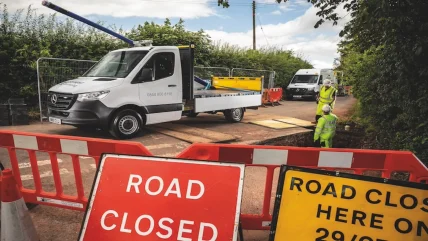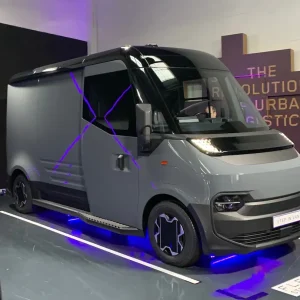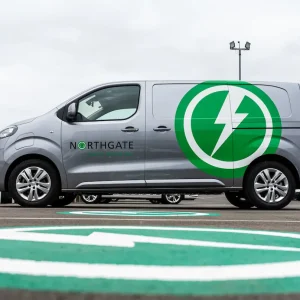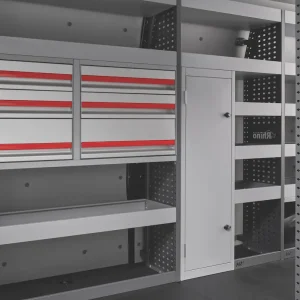
Sit for a moment and think of all the training and qualifications you have had to take for your job. If you’re an electrician you have
to keep updating to umpteenth-edition, if you’re dealing with solvents, coatings or hydraulic oils, you’ll have a CoSHH certification. What qualification do
you have to drive the van? That, 3.5 tonne, 6.0 metres long – potentially laden with hazardous substances – van. A driving licence, gained when you were 17 in a Ford Fiesta. However, you’ve driven for donkey’s years, never had a collision, not even a speeding ticket. You are an experienced driver. That illustrates the eternal stumbling block to further driver training. You have to take professional qualifications and training courses to retain a permit in whatever industry or field you specialise in. Experience is not enough, you have to prove it. In driving, you don’t.
Let’s look at it another way, for every eight hours you spend doing your job, you might only spend 30 minutes each way to and from site and if you take the van home at night, you are driving 75% on ‘home’ turf, – precisely where most collisions happen.
The problem
Time was, when the emphasis in further driver training was placed solely upon the driver – none on their boss, rushing them on each job – and his or her vehicle control skills with its focus skewed totally out of line with reality. In the mid-nineties, when I was involved in fleet publications, driver training was all about skid control, with vans mounted in ‘cradles’ on castors, to mimic sheet ice, on disused airfields with acres of run-off. Contrast that with the tree-lined winding B-road at night, when debris suddenly falls off that skip lorry ahead. Then, almost overnight two things changed. Firstly the widespread adoption of stability controls and driver aids meant the modern LCV could negotiate that corridor of cones, faithfully following the driver’s dictates, fake ice or not. This shifted the training emphasis – not before time – to observation/anticipation/planning. Secondly, the boss got involved in the equation too, since the driving force to training had become external. Just like your vocational qualifications, proof was now needed and it was the insurers who required it.
Those external influences conspired to mature the fleet driver training sector into its current state. It’s now a management function – as it had always been, for the most forward-thinking companies in the fleet sector – with the van being thought of as an extension of the workplace and working hours, rather than a separate entity, and means to an end. Where the training aspect may have seen a natural and understandable resistance from experienced van drivers it is now integral to ongoing training. The ex-airfields are deserted and the cones lay scattered, while the road ahead becomes the focus.
The solution
There are myriad fleet training companies, but if you’re just embarking on this route for your company, look to the bigger picture first.
Driving for Better Business is a free-to-access, government-backed Highways England programme, delivered in partnership with RoadSafe, to help employers in the private and public sectors reduce work-related road risk, protecting staff who drive or ride for work, and others who they may share the road with.
Its mission is to improve the levels of compliance for all those who drive or ride for work by sharing good practice and demonstrating the significant business benefits of managing work-related road risk more effectively.
Visit the website: www.drivingforbetterbusiness.com
“Driving for work is one of the highest-risk activities that most employees undertake. It is also a significant cost to the business. Employers that manage this issue well have peace of mind that they are legally compliant, are regarded by staff as better places to work and perform at a much higher level of efficiency than those that don’t.” says Simon Turner, Campaign Manager for Driving for Better Business.
“There is clearly a strong business case for managing work-related road safety. Fewer road incidents mean fewer days lost to injury; fewer repairs to vehicles with vehicles out of action; fewer missed orders and overall reduced running costs. Now is the time to become better informed and start getting the benefits of better practice,” concludes Turner.
The take up has been particularly high in the construction industry, possibly as that sector is one of the most hazardous and equally most active in safety initiatives.
Over the last six years the construction company Balfour Beatty, which manages the road risk of around 12,000 drivers, reported their crash frequency rate fall by 63% – equivalent to £570,000 of annual benefits. Likewise Amey, responsible for 11,000 drivers, reported at-fault incidents down 38% over 12 months from 1,380 to 89.
So, does the whole aspect of driver training require the culture change that was once its biggest barrier, or is it simply driven by good business sense?
Dave Conway, road safety manager at transport and construction company FM Conway, says: “If you are going to persuade a business to adopt these systems there needs to be a business case. Within the first year of adopting the system, we found ourselves with a £56,000 reduction in our fleet insurance premium. That’s a sound business case.”
Earlier this year, Driving for Better Business highlighted the important role of trade associations in raising awareness and setting standards of safety – particularly in the construction and building sector. Tippers, dropsides and pick-ups are the vehicles most likely to have insecure loads. Often, the main cargo of aggregates or topsoil is secure enough, but how often do you see loose equipment or tools thrown on top.
So, with management at one with ongoing driver training, the issue of driver engagement can still be a considerable obstacle. How do you tell a van driver covering over 50,000 miles per year, accident-free, that they are doing it wrong? You don’t, you reward them for doing it right and it’s here where fleet telematics has turned from stick to carrot.
The black box technology, enforced upon recently-licensed boy racers, is at the heart of the aptly-named Lightfoot platform. Its aim is twofold; one of reducing fleet risk and also increasing fuel-efficiency. Hailed as a ‘Fitbit for vans’ Lightfoot has two core components: A small device that communicates directly with the vehicle’s engine to provide the driver with visual and audio feedback to stay within the engine’s optimum efficiency and a rewards platform enabling drivers to benefit personally from better driving – whether at work or home – through competitions, prizes, discounts and other incentives. Similar devices have, for some time, boasted of huge improvements for fleet risk and cost, but Lightfoot’s claims, including a rapid and measurable improvement in driving styles, changes sustained over time because of ongoing in-cab engagement and minimal management input, are backed with some impressive figures. Fuel and emissions savings of 15–20% (validated by Professor Chris Brace of Bath University) and accident reductions of up to 40% (validated by Allianz Insurance Plc).
While such systems may be all the rage in large fleets, where do they leave the sole tradesperson, with one van and a big workload? Your van is in good working condition, but you still must have it MOT’d, so think of your driving in the same way. You can go down the qualification route and many insurers will reduce your premium. If so, look to RoSPA (Royal Society for Prevention of Accidents) with its Bronze, Silver and Gold standards, it is the most respected and one which you must retake periodically. The alternative IAM (Institute of Advanced Motorists) is a one-off test, widely considered as a starter grade and entry is free to RoSPA holders anyway. You could merely do it for your own peace of mind. Contact your local driving instructor – they are not just all about learners – for a couple of refresher hours. After all, the best way to prove your prowess is to prevent a collision in the first place and polishing your skills, no matter how long-standing they are, can never be a bad thing.





